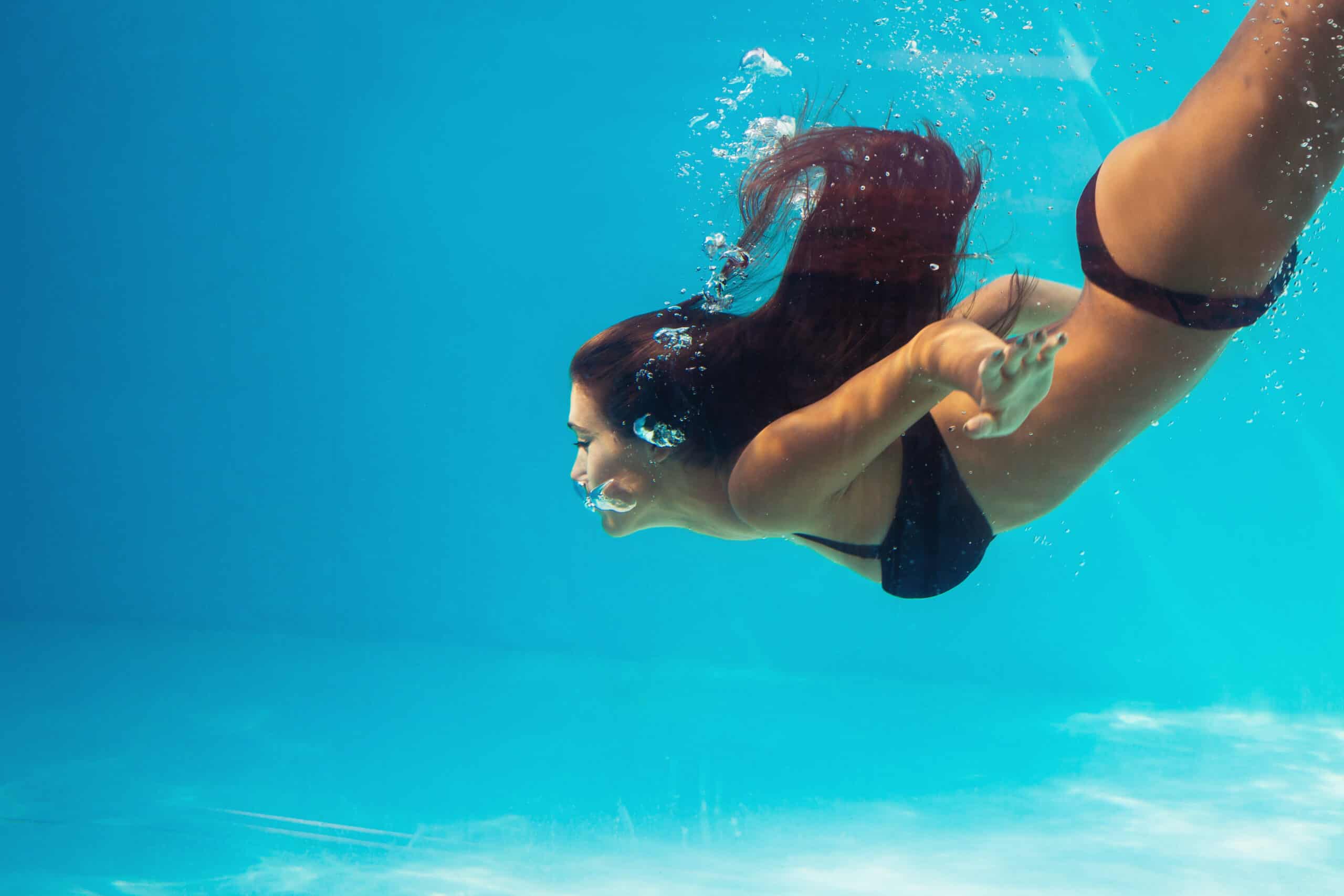A salt chlorinator is the system that converts dissolved salt into liquid chlorine to sanitize the pool water to keep it safe and clean for swimming. The process of electrolysis occurs inside a salt cell to make this happen and it happens while the pool pump is running.
The question is…Can you swim in the pool while the chlorinator is running? Non-salt water pool owners don’t dump large amounts of chemical chlorine in the water and then swim right away. Is the same true for a salt water pool?
You can swim when the salt chlorinator is running and producing chlorine as it’s a passive system and doesn’t impact swimming or your health. A chlorinator produces a slow, steady stream of chlorine over time and won’t be noticeable to swimmers in any way.
When you add large amounts of chemical chlorine (or other chemicals) to a pool, it’s best to give some time for the chlorine to mix throughout the pool before swimming again.
But in a salt water pool, small amounts of chlorine produced through electrolysis by the chlorinator don’t require such a delay. You can swim at any time including when the chlorinator is running, without worry.
How does a salt chlorinator produce chlorine?
The main parts of a salt chlorinator system are the control system itself, the salt cell and water flow sensor. As water passes through the salt cell, electrically-charged metal plates inside the cell convert dissolved salt into chlorine through a process called electrolysis.
When the pump is running and the chlorinator is active, chlorine will be produced. The chlorinator can’t shock the pool quickly nor can it quickly raise chlorine. This is why we as salt water pool owners often need to shock the water with chemical chlorine.
What the chlorinator can do is provide a steady albeit slow flow of chlorine to maintain the level of chlorine in the water between the 1 ppm and 3 ppm level that is required. PPM stands for Parts per Million and is the measurement used to measure chlorine in pool water, among other things.
Why can you swim in a salt water pool while chlorine is being produced?
You can swim in a salt water pool while chlorine is being produced because the salt chlorinator produces it at a slow rate. Dumping a large amount of crystal or liquid chlorine can quickly elevate chlorine levels as it’s circulating throughout the water.
But with a salt chlorinator, it’s usually capable of producing at best around 1.47 lbs of chlorine per day and that’s if it’s running 24/7.
Pool owners might only run their pump 8-10 hours per day.
And you can only run the chlorinator if the pump is running.
And if you’re running your chlorinator at the 50% setting which is pretty common, it also means you’re only producing chlorine 50% of the time that the pump is running or 4-5 hours per day assuming 8-10 hours per day of pump run time.
A salt chlorinator produces a steady but slow stream of chlorine while it’s running. You can safely swim while it’s operating. You won’t even know it’s on unless you’re standing by the chlorinator and see that the light that says “Generating” or “Chlorination” is lit!
Why can’t you swim in a pool right after chlorine has been added?
When you add a large amount of chemical chlorine – or any pool chemical – it’s a good idea to follow the manufacturer’s instructions as to when you can swim again. Some pool chemicals require a 20 minute wait time but manufacturers usually suggest waiting up to 4 hours after adding chlorine to your pool, before swimming again.
It also depends on how much chlorine you add and the method.
If you have chlorine pucks in the side skimmer slowly dissolving, that’s different. In this case, the pucks can take days to dissolve so the chlorine is being introduced into the pool water very slowly. You can safely swim in the water.
But if you dump a large container of liquid chlorine in, or a bag or two of concentrated shock, check the instructions for when you can swim again.
Of course, there is nothing stopping you from adding chlorine of any kind after you’re done swimming for the day and allowing it to circulate overnight. Plus, it’s recommended to add chemical chlorine without direct sun which kills chlorine.
In that regard, adding chemical chlorine to a pool after sundown is a good idea when possible.
Summary
While you want to wait the recommended time before swimming again after adding chemicals to your pool, swimming while the chlorinator is running and producing chlorine is not a problem. Chlorinators produce chlorine at a slow rate and you won’t even notice it’s being produced while swimming.
Chlorinators flick on and off regularly too. It’s impossible to know when it’s producing chlorine at any given time unless you are literally watching the chlorinator control panel, which means you’re out of the pool anyways at that time!
Here’s an article you might like to read called Do You Use Chlorine in A Saltwater Pool that continues the discussion of chlorine in your salt water pool.

